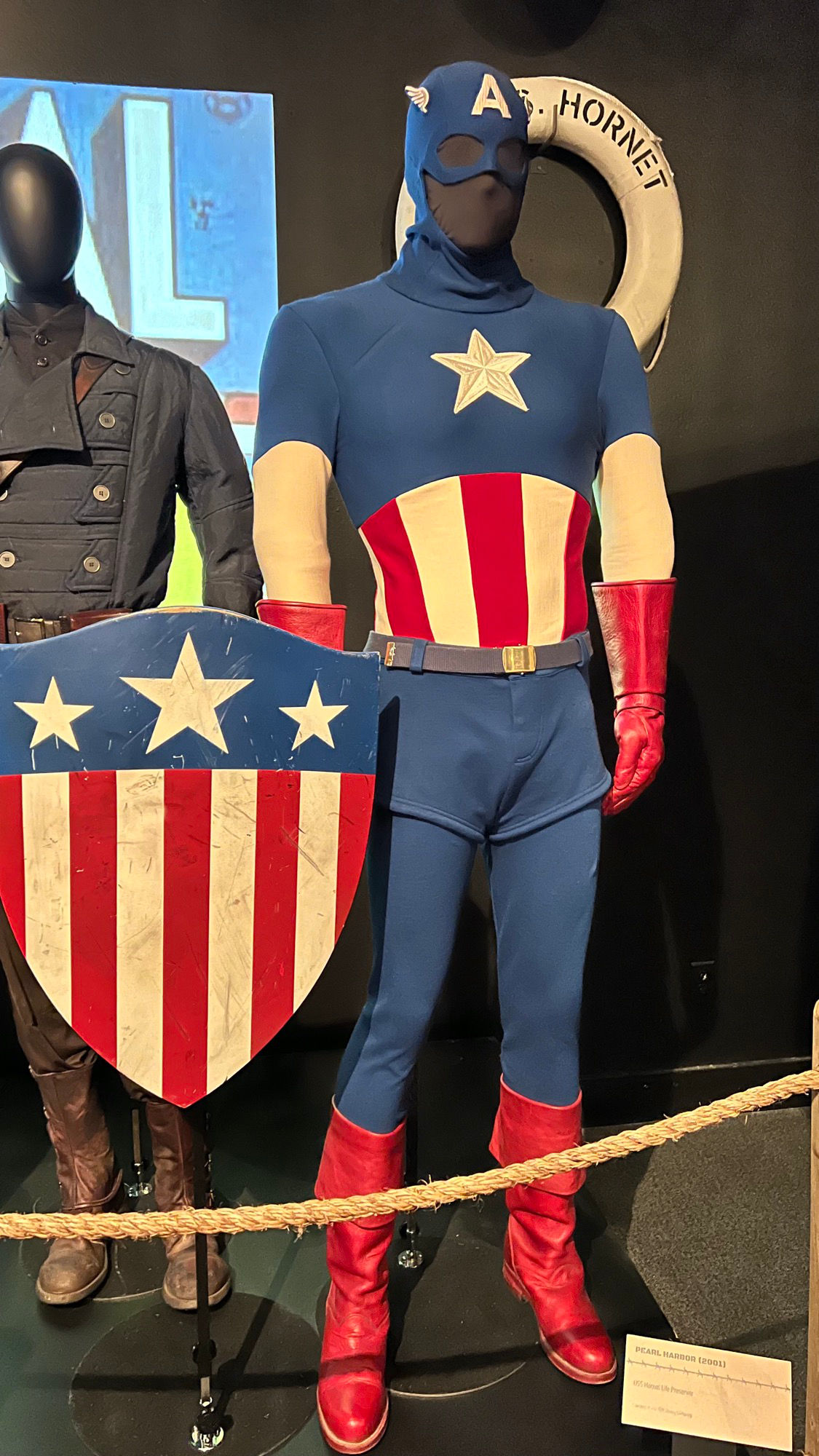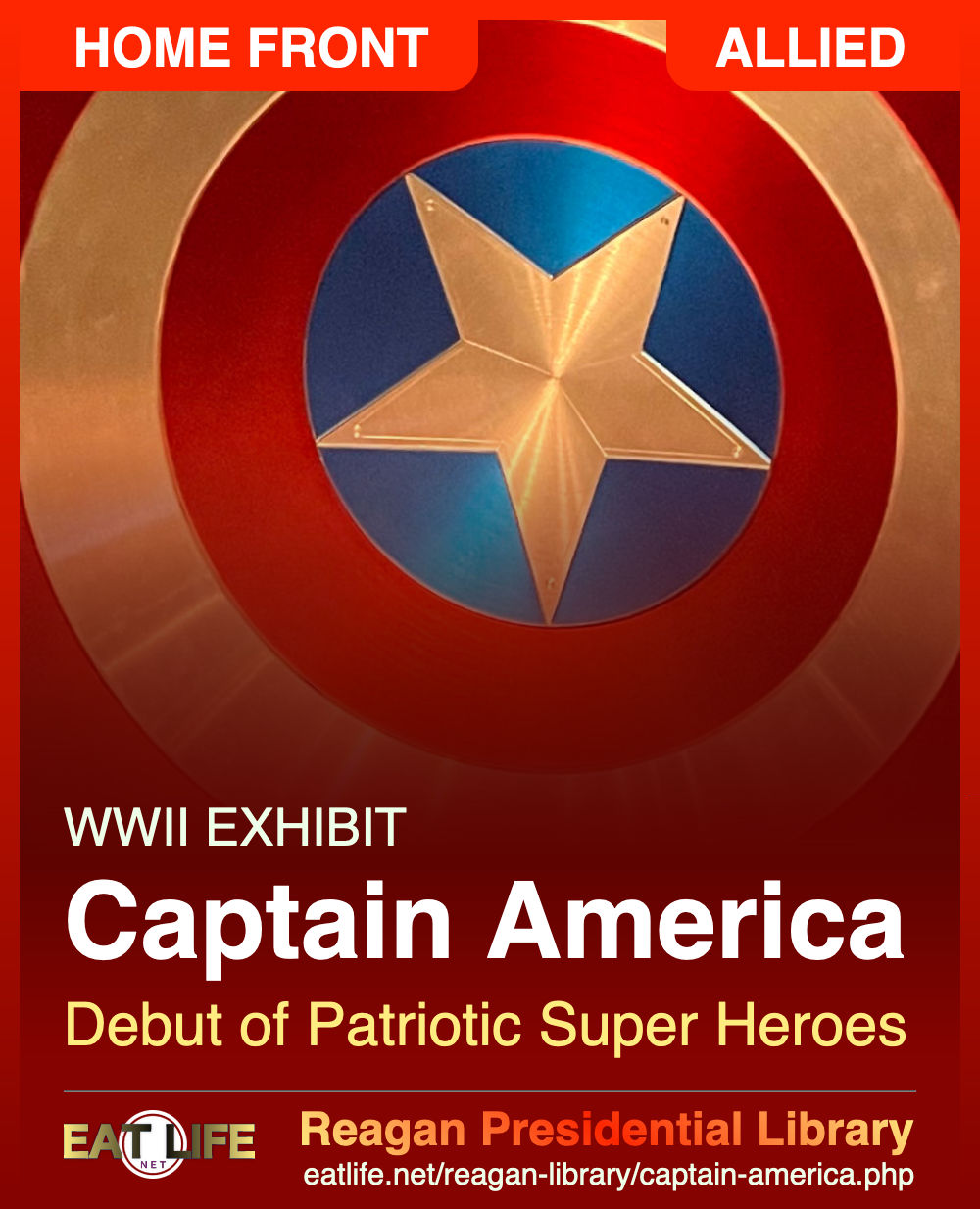New patriotic super heroes were introduced during WWII. Cartoonists Joe Simon and Jack Kirby, sons of Jewish immigrants, created a super patriot to fight against Hitler. A scrawny art student who was the test subject for a Super-Soldier serum injection. The serum formula was lost when the scientist that created it was killed by Nazis, making Rogers the only successful Super Soldier. Captain America comic book #1 went on sale December 20, 1940 and sold nearly one million copies. The government used Cap's likeness in propaganda and war bond posters. Stan Lee became editor-in-chief of Captain America in 1943.

Sentinel of Liberty
Captain America made his debut by punching Adolf Hitler in the first issues of Timely Comics' Captain America, dated March 1941. Existing superheroes were recruited for the 'war effort' in their respective comics, but new patriotic heroes were introduced during WWII. Steve Rogers, aka Captain America or "Cap", was created by cartoonists Joe Simon and Jack Kirby, sons of Jewish immigrants. The initial idea was for a character called "Super American," but given there were more "Supers" than "Captains" in comics already, Simon changed the name to Captain America. Simon and Kirby, like many Americans, knew that war would be coming soon, and created an American super patriot to fight against Hitler.
In the original publication, Steve Rogers was a scrawny art student who was rejected from the army for physical reasons, but was later chosen by General Chester Phillips and Dr. Josef Reinstein for "Project: Rebirth." He was the test subject for the Super-Soldier serum injection - which gave him incredible strength, stamina, agility, and intelligence. He was outfitted in a red, white, and blue uniform and given a shield. The serum formula was lost when the scientist that created it was killed by Nazis, making Rogers the only successful Super Soldier. Cap fought Nazis and the Red Skull, usually with the 1st Battalion, 26th Infantry Regiment.
Captain America #1 went on sale December 20, 1940 and sold nearly one million copies, with subsequent copies selling as many. 1940s comic issues are now rare since the public was encouraged to donate read issues to paper drives. Cap was also the first Marvel Comics character to appear outside the pages of a comic book, starring in fifteen chapters of the 1944 movie serial, Captain America, though his backstory was drastically different from the comic book origins.
In the comics, Cap often broke the fourth wall, and spoke directly to his readers. During WWII, the government used Cap's likeness in propaganda and war bond posters. They also sent copies overseas to troops to help boost morale. Cap had a fan club, the "Sentinels of Liberty," and children who sent in their dues received membership cards and badges. In one issue Cap said, "All boys and girls are Sentinels of Liberty whether they wear the badge or not. America is safe while its boys and girls believe in its creeds!"
Stan Lee became editor-in-chief of Captain America in 1943. After the war, Captain America had less relevance to readers, and the Captain America comic series was canceled in 1949. It was briefly revived in 1953, and then brought back into publication in 1964 under Kirby and Lee. Kirby and Lee introduced the story line of the WWII hero frozen in ice and forced to grapple with the modern world. Captain America was brought to a new generation of fans through Marvel Studios film Captain America: The First Avenger and The Avengers films.

WWII Uniform and Shield

USO Uniform and Shield

Taxi Door with Bullet Holes

Camp Lehigh Flag

Steve Rogers (Chris Evans) 4F Form and Inactive File

Captain America Trading Cards
Agent Phil Coulson's (Clark Gregg) Captain America Trading Cards. As seen in the Avengers.







